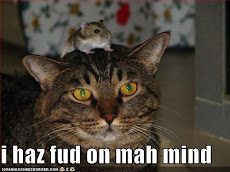I don’t know about you, but I had a very visceral reaction to these commercials. Maybe that’s the beef of the Corn Refiners Association. HFCS has become the bad boy/girl of nutrition. But, I just wanted to shout at the onlookers in the commercial, “Do your research on HFCS and you can clearly see the issue!” So, I will make it easier for people. Here is some information about HFCS, from a variety of sources.

- Extends the shelf life of food.
- Cheaper than sugar.
- No artificial or synthetic ingredients.
Drawbacks:
- Studies have shown a correlation between soda consumption and obesity. Some more recent studies have shown otherwise, but – surprise, surprise –many of them were supported by the beverage industry.
- Most foods with high fructose corn syrup are high in calories and low in nutritional value.
- Even if HFCS is no less healthy than sugar, would you consider sugar healthy?
Foods that contain HFCS:
- Many beverages, including Snapple and sodas.
- Many Cough Syrups, including Robitussin, Vicks and Delsym.
- Many Kellogg’s brand cereals, including Raisin Bran and All-Bran.
- Ketchup, Miracle Whip and steak sauce.
- Pop-Tarts, Fig Newtons and cereal bars.

Regardless of whether HCFS is natural or not linked to obesity, the products that contain it tend to be unhealthy. Americans really need to get away from so many processed foods with no nutritional value. As a self-admitted soda addict, believe me when I say that we can do much better for our bodies. Even if there is not a proven direct link between HFCS and health problems, it’s plain to see that processed foods play a factor in health. How can we eat HFCS in moderation, as the Corn Refiners Association suggests, when it’s in so much of what we eat? Let’s be honest with ourselves here.
Consider the following from the USDA:
USDA recommends that the average person on a 2,000-calorie daily diet include no more than 40 grams of added sugars. That’s about 10 teaspoons, or the amount of sugar in a 12-ounce soft drink. Sugar–including sucrose, corn sweeteners, honey, maple syrup, and molasses–is ubiquitous and often hidden. In a sense, sugar is the number one food additive. It turns up in some unlikely places, such as pizza, bread, hot dogs, boxed mixed rice, soup, crackers, spaghetti sauce, lunch meat, canned vegetables, fruit drinks, flavored yogurt, ketchup, salad dressing, mayonnaise, and some peanut butter. Carbonated sodas provided more than a fifth (22 percent) of the refined and added sugars in the 2000 American food supply, compared with 16 percent in 1970.


2 comments:
Great post! I wrote an 8 page paper on HFCS last semester. I went in thinking it was the worst possible substance you could put it your body and after reading the research I realized it had been wrongly villified. It is by no means healthy, but like you said neither is sugar. A lot of the negative research draws assumptions from fructose which is metabolized very differently than HFCS. I have been arguing with family and friends on the issue and they simply do not believe me. This post was well researched and unbiased, well done!
This is a great post. I'll share this along with my friends so they would be aware of this too! I'd also like to invite you to take some time to drop by at Foodista. We have launched an online food and cooking encyclopedia ala wikipedia and we'd like you to see what the foodie community have contributed. Thanks, See you there!
Post a Comment